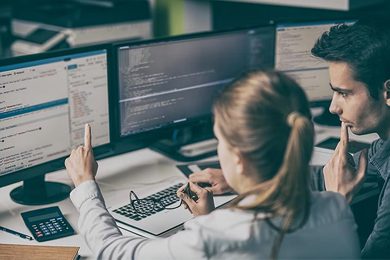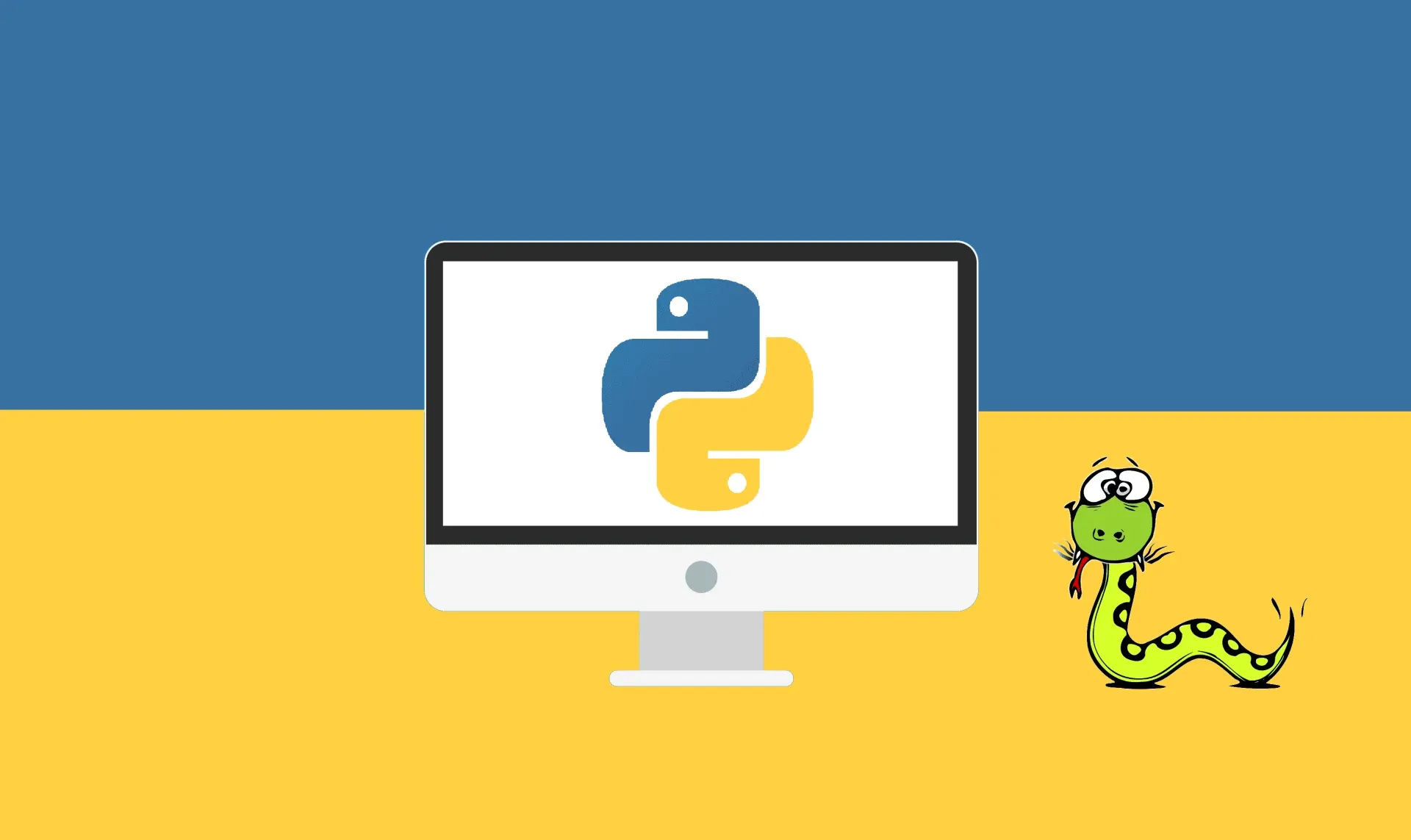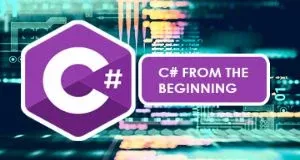This plan includes
- Limited free courses access
- Play & Pause Course Videos
- Video Recorded Lectures
- Learn on Mobile/PC/Tablet
- Quizzes and Real Projects
- Lifetime Course Certificate
- Email & Chat Support
What you'll learn?
- You will Learn Python the MODERN WAY - Step By Step - With 200 HANDS-ON Code Examples
- You will Understand the BEST PRACTICES in Writing High Quality Pythonic Code
- You will Solve a Wide Range of Hands-on Programming EXERCISES with Python
- You will Learn to Write AWESOME Object Oriented Programs with Python
- You will Acquire ALL the Python Skills needed to TRANSITION into Analytics, Machine Learning and Data Science Roles
- You will Acquire ALL the SKILLS to demonstrate an EXPERTISE with Python Programming in Your Job Interviews
- You will learn about a wide variety of Python Data Structures - List, Set, Dictionary and Tuples
- You will learn the basics of PyCharm IDE and Python Shell
- You will learn how to think as a Python Programmer
- You will learn the basics of programming - variables, choosing a data type, conditional execution, loops, writing great methods, breaking down problems into sub problems and implementing exception handling.
- You will learn the basics of Object Oriented Programming - Inheritance, Abstract Class and Constructors
- You will learn the important concepts of Object Oriented Programming - Abstraction and Inheritance
Course Overview
Pre-requisites
- You have an attitude to learn while having fun :)
- We will help you install Python 3 and PyCharm
- You have ZERO Python Programming Experience
Target Audience
- You want to Learn Programming with Python
- You are a Beginner with No Programming Experience
- You want to automate things with Python
Curriculum 151 Lectures 11:09:19
Section 1 : Introduction To Python Programming With Multiplication Table
- Lecture 2 :
- Step 02 - Introduction to Multiplication Table challenge
- Lecture 3 :
- Step 03 - Break Down Multiplication Table Challenge
- Lecture 4 :
- Step 04 - Python Expression - An Introduction
- Lecture 5 :
- Step 05 - Python Expression - Exercises
- Lecture 6 :
- Step 06 - Python Expression - Puzzles
- Lecture 7 :
- Step 07 - Printing output to console with Python
- Lecture 8 :
- Step 08 - Calling Functions in Python - Puzzles
- Lecture 9 :
- Step 09 - Advanced Printing output to console with Python
- Lecture 10 :
- Step 10 - Advanced Printing output to console with Python - Exercises and Puzzle
- Lecture 11 :
- Step 11 - Introduction to Variables in Python
- Lecture 12 :
- Step 12 - Introduction to Variables in Python - Puzzles
- Lecture 13 :
- Step 13 - Assignment Statement
- Lecture 14 :
- Step 14 - Tip - Using formatted strings in print method
- Lecture 15 :
- Step 15 - Using For Loop to Print Multiplication Table
- Lecture 16 :
- Step 16 - Using For Loop in Python - Puzzles
- Lecture 17 :
- Step 17 - Using For Loop in Python - Exercises
- Lecture 18 :
- Step 18 - Getting Started with Programming - Revise all Terminology
Section 2 : Introduction To Methods - Multiplication Table
- Lecture 1 :
- Step 00 - Section 02 - Methods - An Introduction
- Lecture 2 :
- Step 01 - Your First Python Method - Hello World Twice and Exercise Statements
- Lecture 3 :
- Step 02 - Introduction to Python Methods - Exercises
- Lecture 4 :
- Step 03 - Introduction to Python Methods - Arguments and Parameters
- Lecture 5 :
- Step 04 - Introduction to Python Method Parameters - Exercises
- Lecture 6 :
- Step 05 - Introduction to Python Method - Multiple Parameters
- Lecture 7 :
- Step 06 - Getting back to Multiplication Table - Creating a method
- Lecture 8 :
- Step 07 - Tip - Indentation is king
- Lecture 9 :
- Step 08 - Introduction to Python Method - Puzzles - Named Parameters
- Lecture 10 :
- Step 09 - Introduction to Python Method - Return Values
- Lecture 11 :
- Step 10 - Introduction to Python Method - Return Values - Exercises
Section 3 : Introduction To Python Platform
- Lecture 1 :
- Step 01 - Writing and Executing your First Python Script
- Lecture 2 :
- Step 02- Python Virtual Machine and bytecode
Section 4 : Introduction To PyCharm
- Lecture 1 :
- Step 01 - Installing and Introduction to PyCharm
- Lecture 2 :
- Step 02 - Write and Execute a Python File with PyCharm
- Lecture 3 :
- Step 03 - Execise - Write Multiplication Table Method with PyCharm
- Lecture 4 :
- Step 04 - Debugging Code with PyCharm
- Lecture 5 :
- Step 05 - PyCharm Tips : Tool Windows
- Lecture 6 :
- Step 06 - PyCharm Tips : Keyboard Shortcuts
Section 5 : Basic Numeric Data Types and Conditional Execution
- Lecture 1 :
- Step 01 - Introduction to Numeric Data Types
- Lecture 2 :
- Step 02 - Exercise - Calculate Simple Interest
- Lecture 3 :
- Step 03 - Introduction to Numeric Data Types - Puzzles
- Lecture 4 :
- Step 04 - Introduction to Boolean Data Type
- Lecture 5 :
- Step 05 - Introduction to If Condition
- Lecture 6 :
- Step 06 - Introduction to If Condition - Exercises
- Lecture 7 :
- Step 07 - Logical Operators - and or not
- Lecture 8 :
- Step 08 - Logical Operators - and or not - Puzzles
- Lecture 9 :
- Step 09 - Introduction to If Condition - else and elif
- Lecture 10 :
- Step 10 - if, else and elif - Menu Exercise - Part 1
- Lecture 11 :
- Step 11 - if, else and elif - Menu Exercise - Part 2
- Lecture 12 :
- Step 12 - if, else and elif - Puzzles
Section 6 : Text in Python
- Lecture 1 :
- Step 01 - Text in Python - Methods in str class
- Lecture 2 :
- Step 02 - Data Type Conversion - Puzzles
- Lecture 3 :
- Step 03 - Strings are immutable
- Lecture 4 :
- Step 04 - There is no seperate Character data type
- Lecture 5 :
- Step 05 - String module
- Lecture 6 :
- Step 06 - Exercise - is_vowel, print lower case and upper case characters
- Lecture 7 :
- Step 07 - String - Exercises and Puzzles
- Lecture 8 :
- Step 08 - String - Conclusion
- Lecture 9 :
- Step 05 - String module - v02
Section 7 : Python Loops
- Lecture 1 :
- Step 01 - For loop basics
- Lecture 2 :
- Step 02 - For loop exercise 1 - is_prime
- Lecture 3 :
- Step 03 - For loop exercise 2 - sum_upto_n
- Lecture 4 :
- Step 04 - For loop exercise 3 - sum of divisors
- Lecture 5 :
- Step 05 - For loop exercise 4 - print a number triangle
- Lecture 6 :
- Step 06 - Introduction to while loop in Python
- Lecture 7 :
- Step 07 - While loop - Exercises
- Lecture 8 :
- Step 08 - Choosing a Loop - Menu Exercise
- Lecture 9 :
- Step 09 - Loops - Puzzles - break and continue
Section 8 : Python Tips For Beginners
- Lecture 1 :
- Tip 1 - Using Predefined Python Modules
- Lecture 2 :
- Tip 2 - Loop - Getting Index Element
- Lecture 3 :
- Tip 3 - Short hand If Statement
- Lecture 4 :
- Tip 4 - Python is Strongly Typed and Dynamic Language
- Lecture 5 :
- Tip 4 - Beginners Mistakes - Shadowing
- Lecture 6 :
- Tip 5 - Beginners Mistakes - Indentation
- Lecture 7 :
- Tip 6 - PEP8 - Python Style Guide
- Lecture 8 :
- Tip 7 - PEP20 - Zen of Python
Section 9 : Introduction To Object Oriented Programming
- Lecture 1 :
- Step 00 - Introduction to Object Oriented Programming - Section Overview
- Lecture 2 :
- Step 01 - Introduction to Object Oriented Programming - Basics
- Lecture 3 :
- Step 02 - Introduction to Object Oriented Programming - Terminology - Class, Obj
- Lecture 4 :
- Step 03 - Introduction to Object Oriented Programming - Exercise - Online Shoppi
- Lecture 5 :
- Step 04 - First Class and Object - Country class
- Lecture 6 :
- Step 05 - Create Motor Bike Python Class and a couple of objects
- Lecture 7 :
- Step 06 - Class and Objects - a few Puzzles
- Lecture 8 :
- Step 07 - Constructor for MotorBike class
- Lecture 9 :
- Step 08 - Constructor for Book class - Exercise
- Lecture 10 :
- Step 09 - Constructors - Puzzles
- Lecture 11 :
- Step 10 - Class and Objects - Methods and Behavior
- Lecture 12 :
- Step 11 - Exercise - Enhance Book class with copies
- Lecture 13 :
- Step 12 - Class and Objects - Methods and Behavior - Puzzles on self
- Lecture 14 :
- Step 13 - Advantages of Encapsulation
- Lecture 15 :
- Step 14 - Everything is Object in Python
Section 10 : Python Data Structures
- Lecture 1 :
- Step 01 - Python Data Structures - Why do we need them?
- Lecture 2 :
- Step 02 - Operations on List Data Structure
- Lecture 3 :
- Step 03 - Exercise with List - Student class
- Lecture 4 :
- Step 04 - Puzzles with Strings Lists
- Lecture 5 :
- Step 05 - List Slicing
- Lecture 6 :
- Step 06 - List Sorting, Looping and Reversing
- Lecture 7 :
- Step 07 - List as a Stack and Queue
- Lecture 8 :
- Step 08 - List with a custom class - Country and representation
- Lecture 9 :
- Step 09 - List Comprehension
- Lecture 10 :
- Step 10 - Introduction to Set
- Lecture 11 :
- Step 11 - Introduction to Dictionary
- Lecture 12 :
- Step 12 - Exercise with Dictionary - Word and Character Occurances
- Lecture 13 :
- Step 13 - Puzzles with Data Structures
- Lecture 14 :
- Step 14 - Tuples
- Lecture 15 :
- Step-08 - List-with-a-custom-class - Part-2 - sorting -max and min
Section 11 : Object Oriented Programming Again
- Lecture 1 :
- Step 01 - OOPS Basics Revised
- Lecture 2 :
- Step 02 - Designing a Fan Class
- Lecture 3 :
- Step 03 - Object Composition - Book and Reviews
- Lecture 4 :
- Step 04 - Why do we need Inheritance
- Lecture 5 :
- Step 05 - All classes in Python 3 inherit from object
- Lecture 6 :
- Step 06 - Multiple Inheritance
- Lecture 7 :
- Step 07 - Creating and Using an Abstract Class
- Lecture 8 :
- Step 08 - Template Method Pattern with Recipe Class
- Lecture 9 :
- Step 09 - A Quick Revision
Section 12 : Error Handling with Python
- Lecture 1 :
- Step 01 - Introduction to Error Handling - Your Thought Process during Error Han
- Lecture 2 :
- Step 02 - Basics of Exception Hierarchy
- Lecture 3 :
- Step 03 - Basics of Error Handling - try except
- Lecture 4 :
- Step 04 - Handling Multiple Errors with Multiple except blocks
- Lecture 5 :
- Step 05 - Error Handling - Puzzles - Exception Details
- Lecture 6 :
- Step 06 - Error Handling - finally and else
- Lecture 7 :
- Step 07 - Error Handling - Puzzles 2
- Lecture 8 :
- Step 08 - Raising Exceptions
- Lecture 9 :
- Step 09 - Raising Custom Exceptions
Section 13 : A Few More Python Tips
- Lecture 1 :
- Tip 1 - Math Module and Decimal Class
- Lecture 2 :
- Tip 2 - Statistics Module - find mean and median
- Lecture 3 :
- Tip 3 - Collections Module - deque for Queue and Stack
- Lecture 4 :
- Tip 4 - Date Module
- Lecture 5 :
- Tip 5 - Methods and Arguments - Basics
- Lecture 6 :
- Tip 6 - Methods and Arguments - Keyword Arguments
- Lecture 7 :
- Tip 7 - Methods and Arguments - Unpacking Lists and Dictionaries
- Lecture 8 :
- Tip 8 - Creating Custom Modules and Using Them
- Lecture 9 :
- Tip 9 - Defining Equality for Classes
- Lecture 10 :
- Tip 10 - None
Our learners work at
Frequently Asked Questions
How do i access the course after purchase?
It's simple. When you sign up, you'll immediately have unlimited viewing of thousands of expert courses, paths to guide your learning, tools to measure your skills and hands-on resources like exercise files. There’s no limit on what you can learn and you can cancel at any time.Are these video based online self-learning courses?
Yes. All of the courses comes with online video based lectures created by certified instructors. Instructors have crafted these courses with a blend of high quality interactive videos, lectures, quizzes & real world projects to give you an indepth knowledge about the topic.Can i play & pause the course as per my convenience?
Yes absolutely & thats one of the advantage of self-paced courses. You can anytime pause or resume the course & come back & forth from one lecture to another lecture, play the videos mulitple times & so on.How do i contact the instructor for any doubts or questions?
Most of these courses have general questions & answers already covered within the course lectures. However, if you need any further help from the instructor, you can use the inbuilt Chat with Instructor option to send a message to an instructor & they will reply you within 24 hours. You can ask as many questions as you want.Do i need a pc to access the course or can i do it on mobile & tablet as well?
Brilliant question? Isn't it? You can access the courses on any device like PC, Mobile, Tablet & even on a smart tv. For mobile & a tablet you can download the Learnfly android or an iOS app. If mobile app is not available in your country, you can access the course directly by visting our website, its fully mobile friendly.Do i get any certificate for the courses?
Yes. Once you complete any course on our platform along with provided assessments by the instructor, you will be eligble to get certificate of course completion.
For how long can i access my course on the platform?
You require an active subscription to access courses on our platform. If your subscription is active, you can access any course on our platform with no restrictions.Is there any free trial?
Currently, we do not offer any free trial.Can i cancel anytime?
Yes, you can cancel your subscription at any time. Your subscription will auto-renew until you cancel, but why would you want to?
Instructor

511742 Course Views
7 Courses



 Tech & IT
Tech & IT
 Business
Business
 Coding & Developer
Coding & Developer
 Finance & Accounting
Finance & Accounting
 Academics
Academics
 Office Applications
Office Applications
 Art & Design
Art & Design
 Marketing
Marketing
 Health & Wellness
Health & Wellness
 Sounds & Music
Sounds & Music
 Lifestyle
Lifestyle
 Photography
Photography























